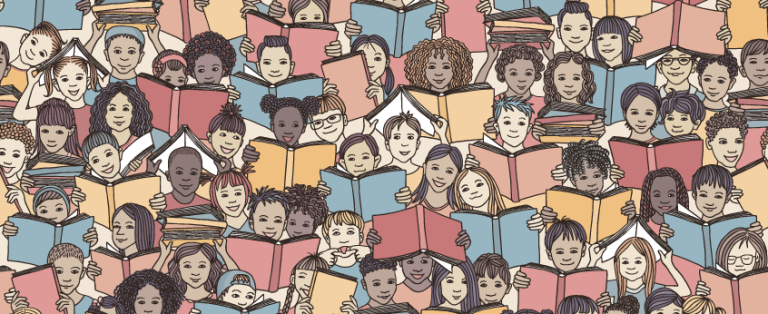Using Picture Books to Teach Multiculturalism and Challenge Bias
As classrooms become more culturally diverse, culturally sustaining pedagogy is instrumental to fostering feelings of inclusion among all students. Students should be prompted to examine their own racial, ethnic, and cultural identities and their relationships with others who share different identities in a nonthreatening manner.
One vehicle to address issues of inclusion is the use of multicultural picture books. Whether these picture books are used with young children in early childhood or school settings, well-designed books provide cross-cultural experiences, promote empathy for minoritized people, and help to generate the kind of critical dialogue that Freire believed could lead to critical consciousness and opportunities for reflection. Through picture books, teachers can create awareness of diversity, promote acceptance of difference, and prepare students to be advocates for inclusion.
Children and young people should be exposed to a range of books about people like themselves as well as about people who are different from themselves and their families. Reading about people—whether real or fictitious—gives students the opportunity to try on a world view that is different from their own. This engenders empathy and eventually helps to encourage social change.

Of course, not all books are the same. Some may even undermine efforts to teach accurate information about people and societies. It is important therefore, to know how to select picture books for children, and carefully consider the range of options, before making a decision. Here are some things to consider when evaluating picture books.
Illustrations
Are there oversimplified generalizations of particular identity groups? For example, are Asians depicted with slanted eyes or excelling at mathematics? Are Muslim women meek and submissive? Are South Asians shown to speak bad English or eating only curry? Are Latinx/Hispanic people depicted as being impoverished? In her 2009 TED talk called “The Danger of a Single Story,” Chimamanda Ngozi Adichie addresses the harm in reducing the diverse experiences of an entire racial or cultural group to a singular portrayal, warning us that if the same story is told over and over again—regardless of its accuracy—it becomes the one that people believe and remember.
Just as stereotypical characters are harmful, invisible groups in picture books can also reinforce prejudice. When children do not see themselves in the books they read, it undermines their identities and creates a sense of being less important in society. According to Derman-Sparks, single-parent families and families of Middle Eastern origin are typically absent from picture books.
Storyline
Often, cultural prejudices are portrayed not just through the illustrations, but also through the storylines and the implicit messages embedded in the relationships between characters. Evaluate each story for the power relationships it depicts and the unspoken messages presented through the different lifestyles of the characters. Some questions to ask about the story:
- How are problems presented, conceived, and resolved?
- Who typically is shown to cause a problem and who resolves it?
- Whose story is being told?
- Whose story is missing?
- Are value judgements implied about how certain characters live?
- Are comparisons made between the life of an individual character and the mainstream culture shown in the book?
Try and select books that present a range of relationships and a balance between the main characters so that children can be exposed to a variety of characters and role models.
Age Appropriateness
For a book to be appealing to young children, the story and the illustrations must hold their interest. However well meaning a book may be, young children may find that didactic stories that have little visual appeal are boring. Be guided by the age range recommended by the publisher, but be aware that books that may be pitched for an older or younger audience may work for your students, depending on how you intend to use them.
Balance
To offer children a good range of picture books, ensure that your classroom library has a balance of styles, genres, and representation of cultures, identities, and time periods. Some folk and fairy tales can be used mindfully to talk about moral values. But these must be balanced with selections of more contemporary stories that children can relate to better. Similarly, a balance between animal and people characters, as well as between the gender of main characters should be considered. You may also like to consider including some dual language or multilingual books.
Books are powerful sources of nurturing or suppressing identities, both through their stories and illustrations. They help children to learn about themselves and others, as well as inspire action for change. You may find this list of recommended books for young children helpful.

